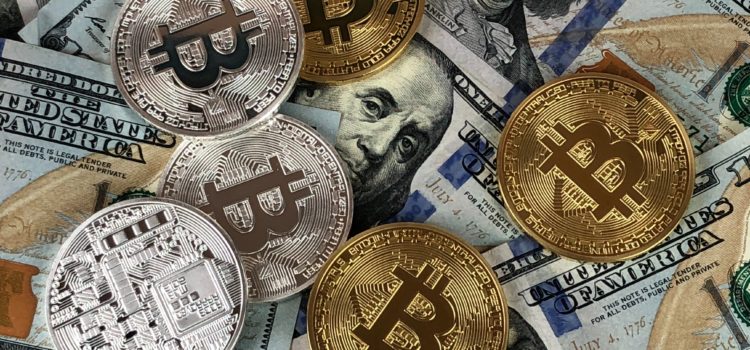

This article is an excerpt from the Shortform book guide to "The Bitcoin Standard" by Saifedean Ammous. Shortform has the world's best summaries and analyses of books you should be reading.
Like this article? Sign up for a free trial here.
Is bitcoin a good substitute for fiat money? What are some bitcoin characteristics that make it superior to fiat money?
In his book The Bitcoin Standard, economics professor Saifedean Ammous suggests that bitcoin has the necessary characteristics to become the global monetary standard. Specifically, bitcoin has what Ammous calls good “salability”—that is, the ability to transmit value.
Let’s examine bitcoin’s salability across three dimensions: scale, space, and time.
1. Scale-Salability
Perhaps the most important bitcoin characteristic is its scale-salability—that is, the ability to transmit value between purchases of different size. For example, maybe you sell something of great value, like a house, and then you want to use a little bit of the money from the sale to purchase something of small value, like a loaf of bread. The scale-salability of something that is used as money depends mostly on how easily divisible it is into units of different value.
Bitcoins have excellent scale-salability because they’re easily divisible in practice: The bitcoin network supports transactions as small as 0.00000001 bitcoin. So you could sell a house for 25 bitcoins and buy a loaf of bread for 0.00015 bitcoins without any trouble.
| Scalability Makes Bitcoin Succeed Where Gold Failed In Capitalism and Freedom, Milton Friedman observes that during the globalization of the economy, precious-metal money became untenable because there wasn’t enough of it to cover all transactions. Equivalently, we could say that precious metals didn’t have adequate scale-salability, because, in theory, any quantity of sufficiently valuable money would be adequate for the global economy if it was infinitely divisible. For example, you could sell a house for 250 ounces of gold, but you couldn’t easily buy a loaf of bread for 0.0015 ounces of gold, because this quantity of gold is too small to easily measure or keep track of. A gold coin weighing 0.0015 ounces would only be one eighth of an inch in diameter (comparable to the size of the letter “o” at normal printed text sizes) and as thick as a human hair. But bitcoin’s greater divisibility overcomes this problem. |
2. Space-Salability
The space-salability of something is its ability to transmit value over geographical distances. For example, maybe you want to sell a house in New York and buy one in Colorado. If your buyer offered to pay in either gold or cattle (both of which Ammous notes have historically been used as money), it would be much easier to carry 250 gold coins with you across the country than to transport 250 head of cattle. As such, gold has much better space-salability than cattle.
Bitcoins have excellent space-salability because they only exist as entries in a digital ledger, which is stored redundantly on many “nodes” throughout the world and accessed via the internet. So you can access your bitcoins from anywhere in the world, provided you can connect to the internet.
(Shortform note: Some economists argue that bitcoin has too much space-salability. For example, in A Random Walk Down Wall Street, Burton Malkiel opines that bitcoin is an ideal medium in which to carry out illegal transactions because bitcoin facilitates easy, anonymous, irreversible transactions without respect to national boundaries. As such, he conjectures that sooner or later, most governments around the world will take steps to shut down the bitcoin network as a means of fighting crime, after which the value of bitcoins will drop to zero. He thus advises against investing in bitcoin, as he sees its current value as a bubble that will eventually break.)
3. Time-Salability
The time-salability of something is its ability to transmit value across time. For example, maybe you want to save up for a big purchase over a period of years or decades. Ammous warns that if you try to save up your money in dollars or other fiat currency, your savings will lose value over time due to inflation.
At present, bitcoin’s time-salability is not as good as its scale-salability or space-salability because its value fluctuates unpredictably. Ammous discusses several factors that contribute to bitcoin’s volatile price.
For one thing, bitcoins exist only as a digital currency, whereas many other things that have been used as money have commercial uses that give them tangible value to begin with. For example, the price of gold never drops below a certain threshold because of the commercial demand for gold to be used in making jewelry and certain electrical components. Bitcoins don’t have this basic commercial value, so their value can fluctuate more erratically.
For another thing, the price of bitcoin is the only factor that can adjust to match supply with demand because the supply of bitcoin at any given time is fixed. By contrast, both supply and price are variable for most other goods. When the demand for a commodity rises, driving up prices, the higher prices motivate producers to increase production. This increase in supply helps to balance out the increased demand, so the price doesn’t rise as much.
So too, if the demand for a commodity drops, prices start to drop, and suppliers cut back on production. But because the supply of bitcoin is fixed, its price fluctuations can’t be ameliorated by increases or decreases in supply, so its price will fluctuate more dramatically in response to fluctuations in demand.
Ammous observes that the effect of demand fluctuations is amplified by the relatively small market for bitcoins and by the temperament of the people who hold them: Many bitcoin holders tend to buy or sell large quantities of bitcoin, depending on whether they think the price will go up or down. This results in proportionately larger fluctuations in demand for bitcoin relative to other currencies and commodities.
However, Ammous also contends that this could change. If the bitcoin market continues to grow, demand may become less volatile. And if central banks build stockpiles of bitcoin to back other currencies (which is an important step toward adopting a Bitcoin Standard) this would also tend to stabilize the value of bitcoins.

———End of Preview———
Like what you just read? Read the rest of the world's best book summary and analysis of Saifedean Ammous's "The Bitcoin Standard" at Shortform.
Here's what you'll find in our full The Bitcoin Standard summary:
- Why bitcoin has the potential to replace the gold standard
- What makes bitcoin stronger than fiat money
- Why bitcoin will never be a global currency for day-to-day transactions






